8. Taxi Driver (1976, Dir. Martin Scorsese)
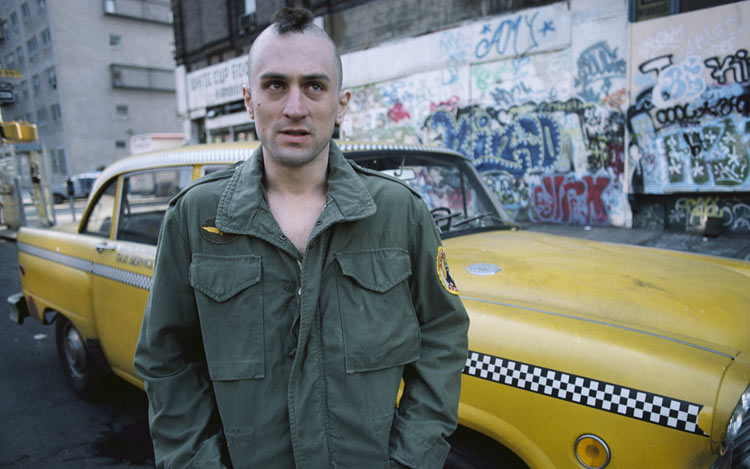
Written by Paul Schrader, who had such an unabashed love for John Ford’s The Searchers that he reworked the plot again for 1980’s Hardcore, which he also directed, Scorsese’s urban nightmare seems about as far from the western as a film could get.
But, the intense focus on the decay of mid-1970s New York City, with its denizens that drive Travis Bickle (Robert DeNiro) to violence, obscures the influence of The Searchers on Schrader’s script, as well as the numerous references to western iconography that pepper the narrative.
The western references begin to take hold especially in the film’s second half, as Travis is drawn deeper into world of the twelve year-old prostitute Iris, played by Jodie Foster and her pimp Sport, played by Harvey Keitel.
It’s Sport who draws attention to Travis’s own conception of himself as a kind of western hero when he points out the latter’s cowboy boots, and is suspicious that they mark Travis as a cop. But Travis isn’t a lawman – he’s a vigilante in-the-making, another character type from the western film, transplanted to New York City.
It’s in the film’s final act that Schrader’s script makes direct allusions to The Searchers. Ford’s massively influential film is about a young woman (Natalie Wood) kidnapped by Native Americans, and pursued for years across the west by her uncle Ethan Edwards (John Wayne) and his nephew Martin (Jeffrey Hunter).
Edwards wants to save the girl from what he sees as her corruption by the Indians; Travis’s violent attack on Sport and the other criminal types is meant as a 1970s urban reworking of the basic story of The Searchers, with Travis as the same kind of corrupted avenger as Edwards.
9. Rolling Thunder (1977, Dir. John Flynn)
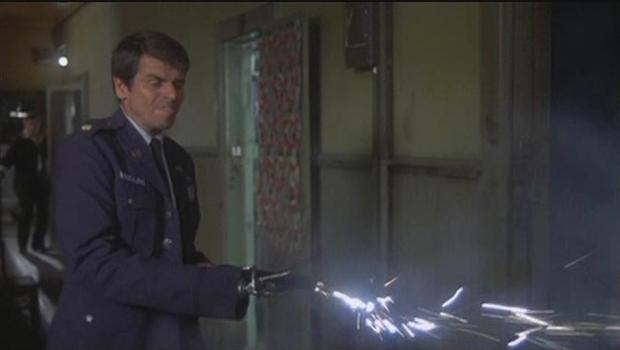
Screenwriter Paul Schrader’s fondness for the western genre finds itself repurposed for contemporary times yet again in this intense revenge story which features Major Charles Rane (William Devane), a veteran of Vietnam, returning stateside to find that his wife has had an affair with another man in their hometown.
Things get worse for Rane as a group of thugs decide to steal a collection of silver dollars given to Rane by the town upon his return from the war, and kill his wife and son in the process. Rane also loses his hand in the attack, and has it replaced by a prosthetic hook.
The difficult readjustment to civilian life that Rane experiences is certainly of a piece with the Vietnam era, but plot, in which the wronged husband pursues outlaws responsible for the deaths of his family, is pure western pulp. In fact, Fritz Lang’s Rancho Notorious (1952) uses the same basic plot structure, as Arthur Kennedy’s Vern Haskell sets off after thieves in similar fashion.
The climax of the film, in which Rane and his war buddy Johnny (Tommy Lee Jones) chase the outlaws to Mexico and attack them in a brothel, is a vintage western shootout reworked for the late 1970s, along with all the accompanying violence and blood that such an evolution would suggest. In one of the film’s most bizarre traits,
Rane wields his prosthetic hook as a weapon just as deadly as his guns. Pure western-infused vengeance is on his mind, and even his body becomes an instrument for settling the score.
10. The Misfits (1961, Dir. John Huston)
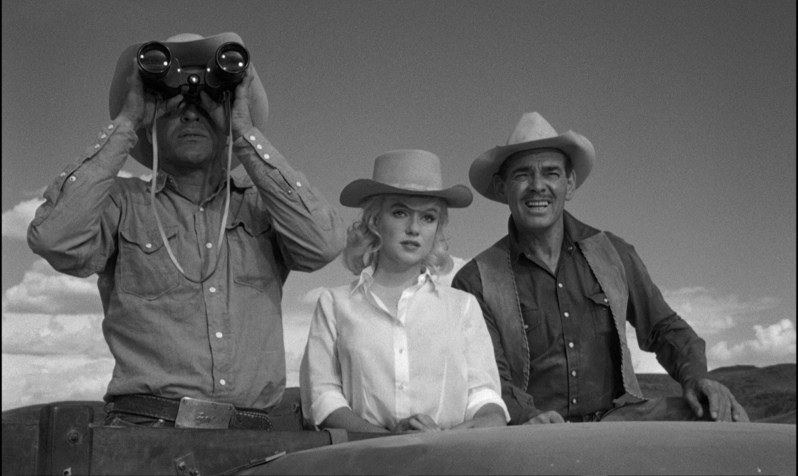
John Huston’s 1961 film is hard to classify – it comes at the end of the classic Hollywood era, and the cracks in the edifice of the studio system are already starting to show. Of course, the film is notable for the performances of three of its leads (Marilyn Monroe, Clark Gable, and Montgomery Clift), all of whom would be dead within five years of the film’s release, and each younger than expected.
With a script by Arthur Miller, certainly no stranger to chronicling the American myth, the western way of life is given an elegiac treatment. Monroe plays Roslyn, a recent divorcee in Reno, Nevada, who meets a group of fellow misfits – an aging cowboy, Gay Langland (Gable), a rodeo man, Perce Howland (Clift), and a tow truck driver, Guido (Eli Wallach).
While the film is largely about the decline of the west, and the inability of men to maintain the mythic lifestyle of the cowboy, its biggest western-influenced sequence is also its climax, as the four misfits try to rope a band of wild horses to sell for profit.
With much dialogue that references the scarcity of the horses, the final sequence is funereal in its tone. The capture of the horses, aided by such modern conveniences as Guido’s propeller-plane and Gay’s flatbed truck, seems more cruel than romantic.
The imagery is pure Stagecoach (1939, Dir. John Ford), but the excitement and the beauty of what the west used to be is nowhere to be found. The idea of the film is best encapsulated by Langland, in the film’s final few moments. He tells Roslyn, “I just gotta find another way to be alive, that’s all. If there is one anymore.”
11. No Country For Old Men (2007, Dirs. Joel and Ethan Coen)
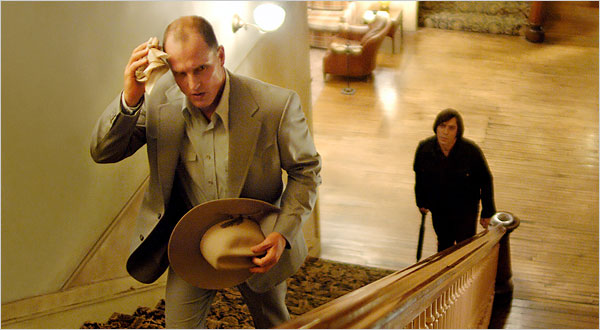
The Coen Brothers’ Best Picture-winning genre exercise, based on the screenplay-turned-novel by renowned author Cormac McCarthy, is a pretty clear example of a neo-western. The dusty, windswept landscapes are all present, as are the brightly lit wide shots that show off the film’s modern cowboys in contrast to the land around them.
Then, of course, there’s the basic story and its characters – the aging lawman (Tommy Lee Jones), the brutal outlaw (Javier Bardem), and the opportunist caught in the middle (Josh Brolin).
Where the film deviates from the western is in its play with the genre conventions that audiences have come to expect, especially when such flagrant use of western iconography is on display. The ostensible hero of the movie, Brolin’s Llewelyn Moss, is killed offscreen by unimportant secondary characters who receive very little screen time, in a striking moment that completely undercuts the direction of the narrative, marking this film as very different from traditional westerns.
The hard left turn continues into the film’s climax, or rather, anti-climax. The western tells us that the story is heading for an inevitable confrontation between the forces of law and order, represented by Jones’ Sheriff Bell, and the forces of amoral violence, personified by Bardem’s Anton Chigurh.
However, that confrontation is withheld – Bell, perplexed at the violence he has seen throughout the story’s events and admittedly afraid of the man who seems to have perpetrated it, retires from law enforcement. Chigurh, though involved in a chance car accident, appears to escape with the missing money that ignited the narrative.
The meeting of the forces of good and evil is forestalled, and the narrative provides no resolution, particularly disorienting in a film genre that offers resolution nearly without exception.
12. Assault on Precinct 13 (1976, Dir. John Carpenter)
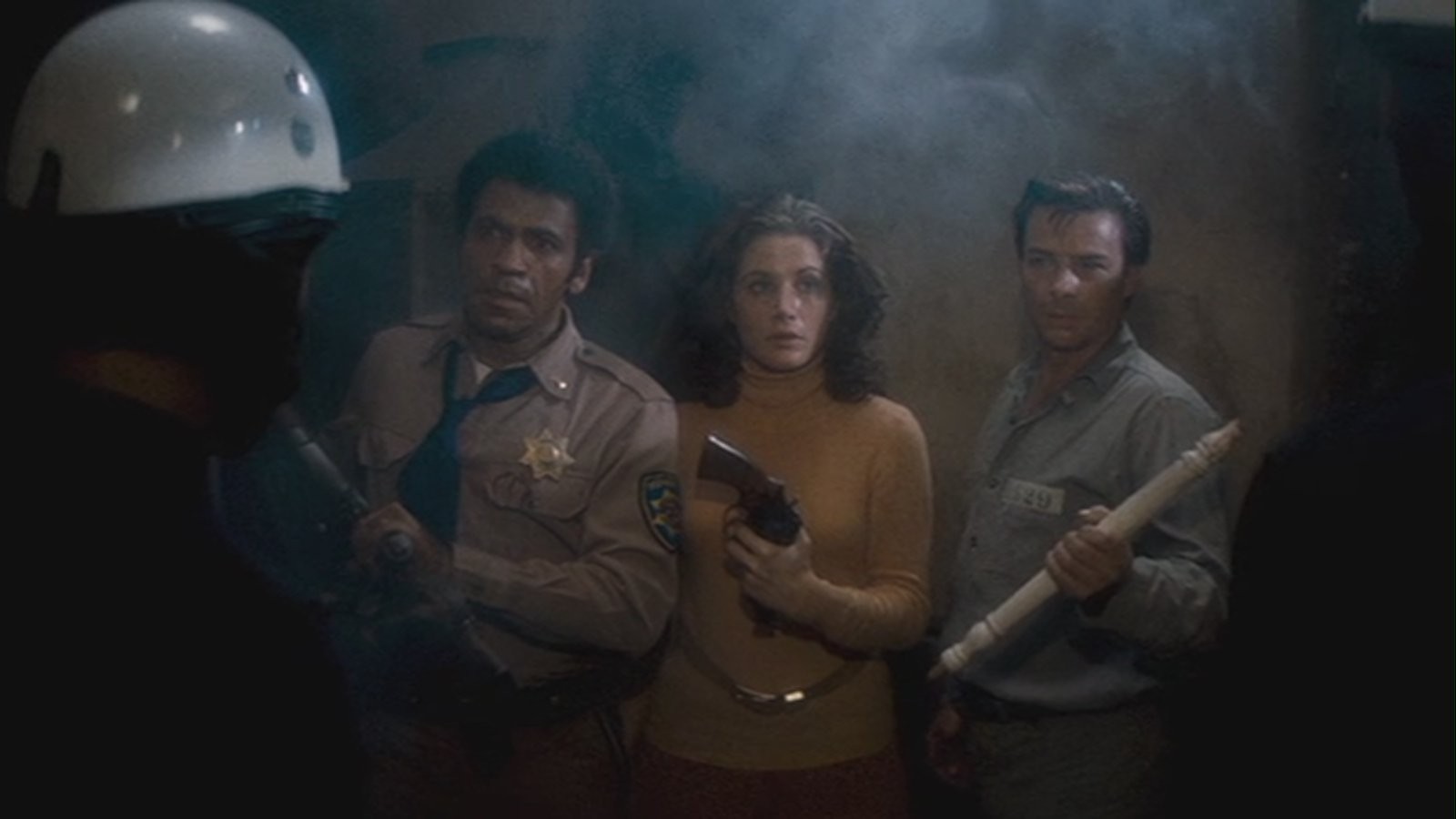
While director John Carpenter’s love for westerns is well documented, none is higher on his list of films than Howard Hawks’s Rio Bravo, which he has cited as a major influence on many occasions.
Carpenter recorded an audio commentary for the DVD version of Rio Bravo, in which he discusses its many virtues and influences on his work. But beyond that, Carpenter has arguably remade Rio Bravo twice – later as the apocalyptic horror thriller Prince of Darkness (1987), but first as 1976’s Assault on Precinct 13.
The basic plot is recycled from Hawks’s film: a group of reluctant law enforcement figures tries to withstand the assault of a group of outlaws bent on destroying them by holing up in a police station/sheriff’s office.
In his DVD commentary for Assault on Precinct 13, Carpenter discusses the ways in which he lifted plot devices and shots, though working from a low budget, from Rio Bravo. A specific touch is the way that big time criminal Napoleon Wilson (Darwin Joston) keeps asking for a cigarette, which Carpenter reports is a direct reference to many of the films of Howard Hawks.
The film’s climax, as the assault reaches a fever pitch, is a full-on western shootout, as guns blaze and the precinct is torn to pieces. But, there is also an uneasy alliance between Wilson, the criminal, and Lieutenant Bishop (Austin Stoker), the cop, that feels right for the western genre; a certain kind of men, whether they are outlaws or lawmen, understand each other in the west – so it is in Carpenter’s film.
13. The Way of the Gun (2000, Dir. Christopher McQuarrie)
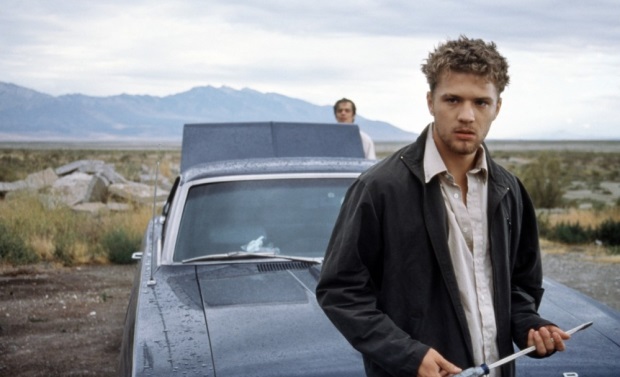
Many modern crime films have twin influences – noir and westerns – and discover their own identities in how much of each they decide to use.
While, like Heat and No Country For Old Men, McQuarrie’s The Way of the Gun relies on some noir techniques, it is the western that’s truly at work here. The story, which involves two outlaws kidnapping a surrogate mother in an effort to extort a ransom from her rich benefactor, is set in a variety of western-inspired locations, including a border motel and a Mexican brothel, dusty and sun-streaked.
The most overt nod to western films is in the names of the two lead characters – Parker (Ryan Phillippe) and Longbaugh (Benicio Del Toro) – which is a direct reference to the actual historical surnames of Butch Cassidy and The Sundance Kid, which Paul Newman and Robert Redford, in their cinematic incarnations, reveal to one another early in George Roy Hill’s 1968 film. McQuarrie didn’t just take the names from Butch and Sundance, though; the repartee between his Parker and Longbaugh works to simultaneously suggest a long history between them, but an uneasiness to their partnership, as well.
They bicker and can’t agree on a plan, animating their relationship with a tremendous amount of the same energy that Newman and Redford had.
The difference, though, is that this Parker and Longbaugh are in over their heads. At the film’s climax, the pair must contend with a contingent of bag men, led by James Caan’s Joe Sarnow, in a bloody south of the border shootout. The absence of score in the climax lends a kind of brutal realism to the gunfight, as each bullet impact (on wood, clay, or bodies) resonates with a power that is rarely seen in classic westerns.
14. Cop Land (1997, Dir. James Mangold)

Mangold’s all-star effort draws overtly on western genre conventions, as it pits small town New Jersey sheriff Freddy Heflin (Sylvester Stallone) against a corrupt band of New York City police officers, led by Ray Donlan (Harvey Keitel).
Donlan’s officers have built themselves a town, free of the crime that they fight in New York City; appointed to safeguard it is Heflin, a puppet and academy reject who doesn’t ask many questions. When Donlan’s nephew Murray (Michael Rapaport), a fellow officer, shoots an unarmed black man and goes into hiding to escape justice, Heflin begins to question where his loyalties should lie.
The basic story of Cop Land relies on the myth of the frontier town, despite the fact that Garrison is located in New Jersey, an eastern state. For the characters, though, the town is the west – it belongs to the cops who built it and live in it, in the tradition of the western expansion that was chronicled so many times in classic films of the genre.
However, it’s in Heflin’s story that the narrative really remixes the western. Freddy, undeniably a coward, finds courage as he decides to take a stand against the cops. With a bit of Rio Bravo influence, Freddy keeps the fugitive Murray locked up in his town’s jail. In the film’s climax, the Sheriff seems to jump stories, into 3:10 To Yuma (1957, Dir. Delmer Daves), as he is bent on escorting Murray to New York City to face justice.
The final, slow motion shootout between Freddy and Donlan’s officers is a testament to the western genre as a whole, but none more so than in Heflin’s long walk to the confrontation, captured in a crane shot that begins on the ground level and pulls back to show Freddy, tiny against the odds he faces. The shot has a direct cinematic referent: High Noon (1952, Dir. Fred Zinnemann).
15. Die Hard (1988, Dir. John McTiernan)
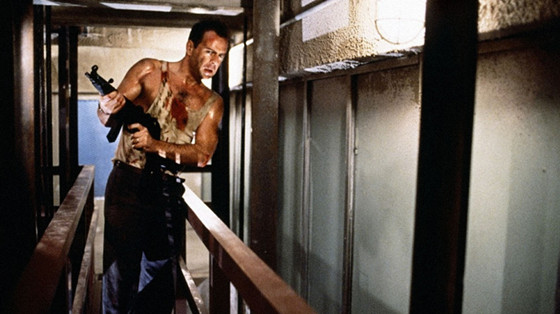
No modern film makes fuller and more self-aware use of the western genre than McTiernan’s film, which is massively influential. Nearly every action movie since Die Hard has in some way paid homage to it, directly or indirectly. While the legacy of Die Hard for the action film writ large is hard to overstate, its western influences show that going backwards to explore its origins can be just as fruitful.
The film’s consistent use of the western genre conventions begins as McClane first walks into the Nakatomi tower. Heading for the elevators, McClane exchanges nods with a building security guard as he passes, in a shot that recalls a stranger riding into town, acknowledging the presence of a sheriff’s deputy.
Obviously, the film doesn’t stop there, as its dialogue makes frequent nods to western films, with terrorist leader Hans Gruber (Alan Rickman) taunting McClane’s heroics with references to movies. Of course, the film’s famous catchphrase, ‘Yippee-ki-yay, motherf—-er,’ has its own western lineage, though given a more profane, Bruce Willis twist.
The film’s climax, where McClane confronts Hans and Eddie, his only remaining henchman, sees not only Hans recalling McClane’s taunt of him from earlier in the film, but some quick draw work from McClane himself, who has taped a loaded gun (with only two bullets left, of course) to his bare back.
After he pulls the trigger, he blows on the barrel, and wishes Hans ‘Happy Trails.’ Ultimately, it is in Die Hard’s overall plot construction, which uses the framework of High Noon (one man, alone, against a group of outlaws), and its numerous direct references to Gary Cooper and Grace Kelly, that marks it as knowingly winking at its western heritage.
Author Bio: Brian Brems is an assistant professor of English and Film at the College of DuPage, a two-year institution in the western Chicago suburbs. He has a Master’s in English (Film & Literature) from Northern Illinois University. He also serves as the Director of Development for the Limelight Theatre Company, where he writes, directs, and teaches writing classes.